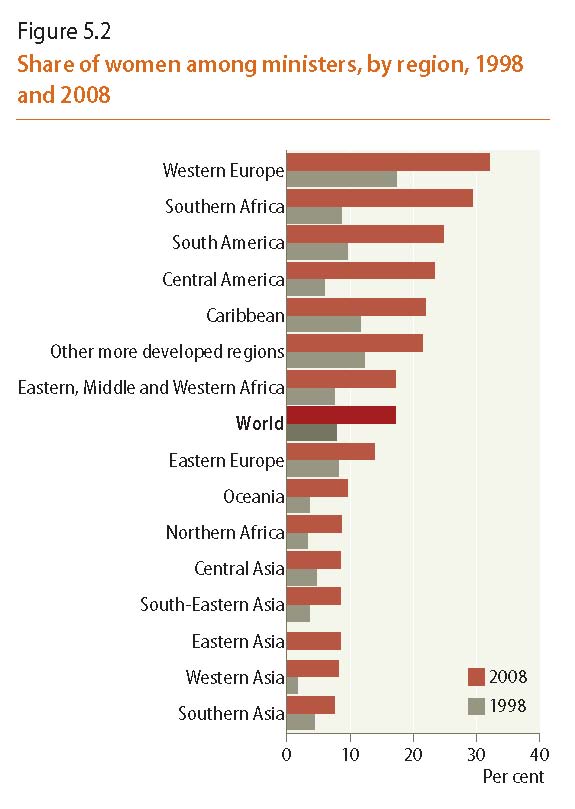We live in a gendered hierarchy in which females are
marginalized at every level in society. This is true at both a national and
international level. Gender norms are a social construct, and the varying media
coverage of female political candidates compared to their male counterparts
provides us with clear examples of how the media reproduces the status quo. Feminist
theory is an emancipatory theory in the way that it seeks to find truth and
highlight the disparities between the sexes. Truth and discourse are key
components needed for positive change.
The media discourse on female politicians has focused
disproportionately on their physical appearance, family life and personality
traits. A study conducted by Erika
Falk on the press coverage of eight presidential campaigns
found that female candidates were more than three times as likely as men to
have their physical appearance mentioned. The president of the National
Organization for Women, Terry O’Neill,
claims that the close scrutiny of a woman’s appearance sends the message “don’t
you dare step into the public sphere, we will savage you for what you look
like’. This exerts social pressure for women to adhere to their traditional,
domestic role or face harsh scrutiny for deviating from them. As Hillary
Clinton paraphrased recently from Eleanor Roosevelt, young women in politics
must ‘grow skin like a rhinoceros’.
Media coverage of Hilary Clinton becoming a
grandmother has sparked debate over the different expectations still dominant
today of a woman’s place in the family structure. Politico
ran a story (which they later changed due to public outcry) questioning whether
Hilary would still run for presidency in 2016 because “why beg donors for money
at dozens of events when there’s a happy baby to spend time with in New York?” Mitt Romney
had 18 grandchildren, and George H.W.
Bush was a grandfather during his time in office, but neither received the
same sort of speculative press. As Clinton stated earlier this
month “the
double standard is alive and well’.
| Mitt Romney and his large family |
According to Jacqui True, ideas
and concepts such as ‘autonomy,
sovereignty, the capacity for reason and objectivity and universalism’ are
associated with the hegemonic western notion of masculinity. Femininity on the contrary is associated with
the absence or shortage of these characteristics.
Feminist critique of Realism highlights how by dividing male and female traits into two, mostly opposing categories, the result is a maintained divide between females and the state. This is because, according to Sylvester 1990, the ‘analogy that rationality is equated with men’s behaviour’ implies that, in Realist terms, the ‘state as a rational actor bears a male-masculine identity’ that excludes women and femininity. This distances what is considered stereotypical ‘feminine’ characteristics from that which is expected of a leader of a state.
A
consequence of differentiating between masculine and feminine characteristics
was highlighted in the Bill O’Reilly video shown below, with speculation that
Hillary Clinton voted in favor of the Iraq war so as to give the impression of having
the masculine qualities of being a ‘tough leader’.
This interview highlights some of the mainstream media
unashamedly focusing on the perceived differences between males and females,
and consequently their capabilities.
There has never been a female United
Nations Security General, which highlights concern over how
armed conflict is predominantly associated with masculine characteristics. McGlen
and Sarkees found in their study of defence establishments
and foreign policy, ‘women are rarely insiders of the actual institutions that
make and implement foreign policy and conduct war’. It is true that women are
more likely to oppose
military force and support humanitarian intervention, but the
lean towards more peaceful means should not be dismissed with gendered
connotations focusing on a socially constructed feminine weakness, but should
be embraced for what it is, an alternative approach to conflict resolution.
By juxtaposing supposed ‘feminine’ qualities with
‘masculine’ qualities, it ignores and discredits the multiplicity of
characteristics that cannot be constrained within two different categories
according to gender. The media’s obsession with simplifying views or
characteristics and always portraying issues in the context of the conflict
between one side vs. another, or in this case masculine qualities vs. feminine
qualities, results in reinforcing socially constructed gender roles. Males and
females are not mutually opposite or exclusive. This obsession with two
opposing ideals can be seen in other areas as well, for example the political
left vs. the political right. We need to break down the political and gendered
structure that feeds on bilateral opposition as this can both prevent
alternative options from surfacing, as well as confining characteristics within two conflicting categories.
Many States have created formal equality between the
genders, but the reality of the situation is far from perfect. The very concepts
of feminine and masculine traits are socially constructed. As we were able to construct these stereotypes, it follows that we also have the ability to de-construct them. The aim must
be to break down the gendered hierarchy that is dominant in our political
system. Feminists Theory highlights the relationship between internal and
external factors. By creating an equal and just state on a national level, it
will hopefully result in the state externalizing their equal philosophies onto
the international sphere, and thus create a more just and equal world order.
NOTE: I highly recommend watching
a short but extremely funny Jon Stewart segment on women in politics which can
be found here.
